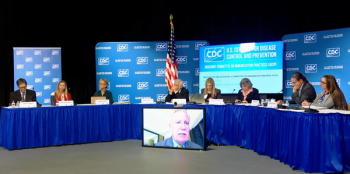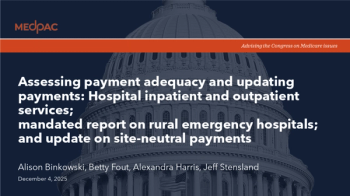
It’s time a real investment is made in primary care
A recent survey by Morning Consult showed that across the country, in both red and blue states, the overwhelming majority of Americans believe that a health system based on a foundation of primary care produces healthier patients, higher quality healthcare and lower costs.
Editor's Note:
showed that across the country, in both red and blue states, the overwhelming majority of Americans believe that a health system based on a foundation of primary care produces healthier patients, higher quality healthcare and lower costs.
Further reading:
· 89% say it’s
· 88% support ensuring coverage for preventive and wellness care to keep patients healthy; and
· 85% support paying doctors for better care and improving patient health instead of for the number of procedures performed.
Unfortunately, current spending on primary care represents just 6% of total healthcare spending. Increasing it to 12%, according to the American Academy of Family Physicians (AAFP), would cut per-patient costs and lead to a decrease in overall health care expenditures.
Trending on our site:
Cost, of course, is not the only factor. Ensuring access is also a key part of any strategy to improve the nation’s healthcare system. Given the very real shortage of primary care physicians, policymakers should be looking for ways to add more primary care professionals to the health care mix.
Today, 65 million Americans live in a “primary-care desert,” lacking access to the physicians who account for more than half of all visits to doctors. The problem is particularly acute in minority, low-income and rural communities. According to a study of U.S. Census and American Medical Association data from 2000 to 2006, 25.6% of blacks and 24.3% of Hispanics lived in ZIP codes with few or no primary care physicians, compared to 9.6% of Asian and 13.2% of whites.
Further reading:
Unless something is done to reverse the trend, the situation will only get worse-by 2025 the country could face a shortfall of as many as 31,000 primary care physicians.
An investment in primary care would help fix a healthcare system that is both expensive and underperforming. That, according to numerous studies, is because primary care produces significant dividends by improving patient health while cutting the cost of care.
Study after study tells us:
· That adult Americans who have a primary care physician have 33% lower
· That in areas of the country where there are more primary care clinicians per person, death rates for cancer, heart disease and stroke are lower and people are less likely to be hospitalized;
Related:
· That Medicare spending is less in states with more primary care physicians and that these states have more effective, higher quality care;
· That in most countries where primary care is at the foundation of the healthcare system, spending is well below that of the United States; and
· That increasing the number of primary care physicians could avert as many as 127,617 deaths per year in the United States.
A number of new initiatives are helping boost primary care. Among them are new value-based payment models that reward doctors and hospitals not for the number of procedures they perform, but instead for improving the health of their patients.
One such initiativeâ-Oregon’s Patient-Centered Primary Care Home program-saved an estimated $240 million between 2012 and 2014, achieving $13 in savings for every $1 increase in primary care spending. In Rhode Island, the state saw an 18% drop in total healthcare spending after it mandated about a 2.6% increase in spending on primary care.
In case you missed it:
Primary care is no less important today than it was in the earliest days of our nation’s history when doctors knew their patients well and cared for entire families. Given its essential role as the “first line of defense” in the nation’s healthcare system, primary care should be at the heart of any health care policy.
Recognizing that undeniable truth will go a long way in giving Americans access to quality and affordable health coverage-something everyone can agree on.
Glen R. Stream is a family physician in La Quinta, California, and president of Family Medicine for America’s Health, which sponsors Health is Primary.
Newsletter
Stay informed and empowered with Medical Economics enewsletter, delivering expert insights, financial strategies, practice management tips and technology trends — tailored for today’s physicians.
















